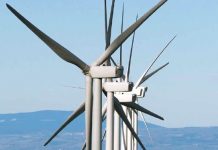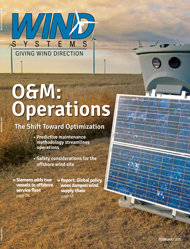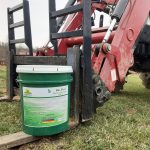The Energy Department recently announced $2.5 million for a new project to research the atmospheric processes that generate wind in mountain-valley regions.
This in-depth research, will be conducted by Vaisala, a global environmental and industrial measurement company, from its Seattle, Washington and Boulder, Colorado offices, and will be used to improve the wind industry’s weather models for short-term wind forecasts, especially for those issued less than 15 hours in advance. With access to better forecasts, wind energy plant operators and industry professionals can ensure wind turbines operate closer to maximum capacity, leading to lower energy costs for consumers.
The Wind Forecasting Improvement Project 2 (WFIP2) is a DOE initiative targeted at enhancing the reliability of wind forecasting around the world, but specifically in challenging areas. By doing so it seeks to reduce the cost of grid integration and help operators optimize performance through more effective short-term modeling of wind variability.
As part of this project, Vaisala and its partners have been tasked with conducting a comprehensive three-phase study of atmospheric phenomena in complex terrain, with the end goal of enhancing the widely used Weather Research and Forecasting (WRF) model and the National Oceanic and Atmospheric Administration’s (NOAA) Rapid Refresh (RAP) and High Resolution Rapid Refresh (HRRR) models.
“Complex terrain creates substantial forecast challenges for wind plants in most regions,” said Jack Peterson, Manager of Energy Operations Support at Southern California Edison. “We have seen many situations where the forecasts are dramatically different at neighboring wind farms with only slight elevation changes. Improving the science behind forecasts is an important step and will greatly benefit the industry by removing some of the challenges we face.”
Peterson will play a supporting role to the study team steered by Vaisala and comprising of the National Center for Atmospheric Research, the University of Colorado Boulder, Sharply Focused, Lockheed Martin, Texas Tech University, the University of Notre Dame, Iberdrola Renewables, Southern California Edison, Cowlitz County Public Utility District, Eurus Energy, Bonneville Power Administration, and Portland General Electric.
The project will focus on the rugged Columbia River Gorge region between the states of Washington and Oregon — an area specifically selected because it experiences nearly all of the identified atmospheric phenomena known to impact wind energy. The efforts of Vaisala’s team will be strengthened through significant collaboration with NOAA and DOE national laboratories.
Following a design and planning phase, the WFIP2 team will deploy extensive measurement equipment for an 18-month period, starting in mid-2015, to first analyze the specific environmental characteristics affecting wind flow patterns, ranging from soil moisture and surface temperatures to the unique topographical features of mountain-valley regions. These observations will then be used to update and improve the computational and atmospheric physics that underpin current forecasting models. Enhanced model predictions produced during the third phase of the project will then be compared with baseline forecasts produced by existing models to evaluate the success of the initiative.
Due to the complexity of terrain in mountain-valley regions and varying degrees of soil moisture and surface temperatures, predicting specific wind conditions presents a major challenge to utility operators looking to optimize the performance of wind turbines in these areas.
This funding will allow Vaisala and its partners to use advanced meteorological equipment to analyze specific environmental characteristics that affect wind flow patterns in the Columbia River Gorge region of Washington and Oregon.
— Source: U.S. Department of Energy; Vaisala



































